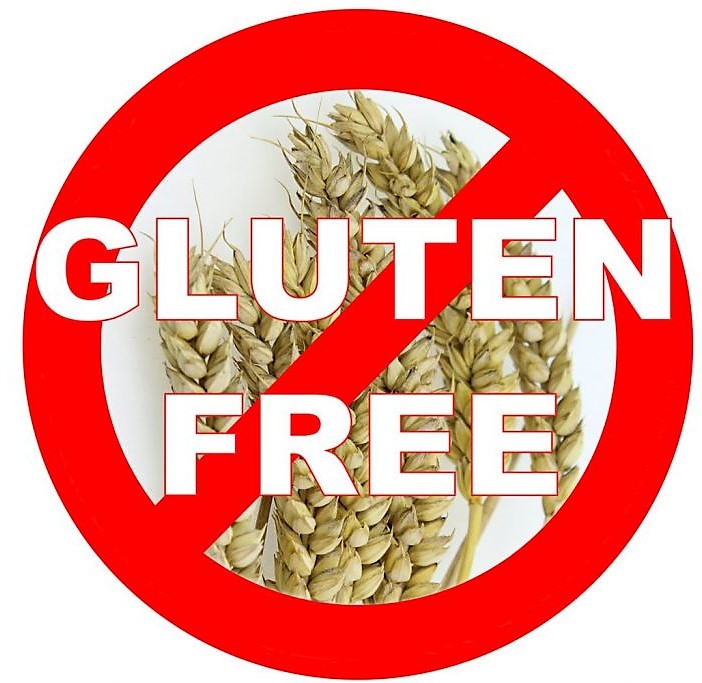Do I have a Gluten Intolerance?
We get the same questions from family and friends who are interested or even puzzled by what we do here at Forum Health Clarkston. Recently, a comment on one of my blogs made me realize that I need to shed a little more light on this situation. It’s not a trend or the latest health craze, like I hear in passing. It’s a serious issue, downright debilitating for some. It’s also a confusing concept, but everyone should at some point ask themselves: Do I have a gluten intolerance?
The answer is probably YES.
I have found that most unaffected people roll their eyes at food allergies, especially when it’s their child who can no longer bring their beloved PB&J to school because little Bobby might die if he even smells it. Thankfully, I think most of the population has learned to accept this one. Kind of, anyway. What I hear the most complaints about lately seems to be that they can no longer send their baby to school with birthday cupcakes because little Emma has a gluten allergy.
I can hear you now… “Psssh! Gluten? It wasn’t like this when we were younger.”
We can say with absolute certainty that poor Emma is not faking her celiac disease, and nor would she want to. Trust me, Emma wants that cupcake. She just doesn’t want all the abdominal bloating, pain, chronic diarrhea, vomiting, and constipation associated with that cupcake. So why didn’t Emma’s mother or grandmother have celiac before? Why does Emma seem to be the first generation of her family to have this problem? Well, number one, she isn’t. She just happens to be the first one diagnosed. Number two, gluten is a growing problem that is even worse now.
What is Gluten?
In order to understand why something is bad for you, you need to know how to define it. So, what is the thing wreaking havoc on our guts? The simple answer is that gluten is wheat, barley, rye, bulgur, kamut, and triticale. For the sake of wordiness, however, I’ll just refer to the good ol’ American favorite: wheat.
Gluten is the protein that makes up wheat. Add water to wheat flour, knead it into a dough and wash away all the starch and fiber, and you’ll be left with gluten. It allows for viscoelasticity and cohesiveness—properties that make the dough doughy, capable of rising, stretchable, and twistable.
Wheat is by all accounts heavy in the carbohydrates and only about 15% protein; however, 80% of that protein is gluten (Davis). I’m sure you’re still asking yourself or me So, what’s the big deal?
The Problem with Gluten
Overall, gluten/wheat is considered an “anti-nutrient,” meaning that it’s difficult to digest for most of the population. The level of that difficulty depends on several factors, such as damage to the gut, immune health, genetic factors, and hormonal balance.
It can begin with a low intolerance that appears as a mild headache. As time goes on, especially if you have leaky gut, that intolerance can erupt into a horrible migraine as your gut health declines. So, really, think of it this way: With leaky gut, the very-difficult-to-digest gluten is getting into your otherwise sterile system. An untreated leaky gut only gets worse, allowing more undigested gluten particles into your bloodstream and more symptoms to arise/worsen.
I’m sure you’re thinking, But seriously, what’s the problem NOW? Why is this happening more and more NOW?
I’m getting there…
Simply put, we aren’t eating our grandmother’s wheat anymore. Today’s wheat is not that precious plant our hungry ancestors stumbled upon and ground into their daily bread. So, what is it? With modern science’s drought and bug resistant, faster-growing, hybridized wheat, we are no longer eating whole, all-natural grains from the good earth that Mother Nature provided. It’s estimated that 5% of the proteins found in hybridized wheat are new proteins that were not found in either of the original wheat plants (Mind Body Green). In other words, not only has the wheat changed—the protein in the wheat has changed, too. These new, man-made proteins are only part of the problem that has led to increased system inflammation and gluten intolerance/allergies.
So, here we are. Our guts are leakier than ever and our wheat is loaded with chemicals and everything else science has done to it. On top of all that, we’re eating more wheat than our ancestors ever did. Don’t believe me? Write down everything you eat in one day. I’ll bet there’s wheat in every category: Toast with your eggs? Crackers with your hummus? Crescent with your chicken salad? Pretzels with your beer? Crust on your pie? Noodles in your pasta? Croutons on your salad? I’ll stop there, but just know that I could go on and on …
Can I have organic wheat?
Any way you slice it, organic wheat is still gluten and gluten is still organic wheat. Now, when it’s organic, that means it’s not supposed to have all the pesticides and modern surprises sprinkled all over it. HOWEVER, gluten is gluten is gluten is gluten. Even in it’s organic form, gluten is an anti-nutrient and difficult to digest. The particles are still entering your system and causing problems. You have to heal your gut first, foremost, and always.
Signs of a Gluten Intolerance
So, when people ask why we “push gluten-free when not everyone needs to be gluten-free,” the answer is simple: we suggest gluten-free because most people should be gluten-free and don’t even realize it. It is estimated that 99% of the people who have a gluten intolerance or celiac disease (an autoimmune condition derived from a gluten intolerance) are never diagnosed (Mind Body Green).
Take a minute to do a head-to-toe check. Get in touch with your body. Do you feel good? Do you get enough sleep, wake refreshed, stay energized, and think clearly throughout the day? Are you bloated? Are you regular? Many people have actually convinced themselves that feeling bad is just a part of aging. Umm…not true. Not ever.
If you have any of these symptoms, there’s a reason and it isn’t age:
- Bloating, gas, constipation/diarrhea, cramping, and other digestion issues
- Fatigue
- Brain Fog
- Migraines/ Frequent Headaches
- Inflammation, swelling, or pain in joints
- Mood related issues like anxiety, depression, mood swings
- Chronic fatigue
- Fibromyalgia
- “Chicken Skin” on the back of your arms—yes! This is a result of fatty acid and vitamin A deficiency, or fat-malabsorption caused by a gluten-damaged gut.
- Unexplainable Weight Gain
- Autoimmune disease: Hashimotos thyroiditis, ulcerative colitis, lupus, psoriasis, scleroderma, multiple sclerosis, etc.
The best way to find out how gluten intolerant you are is to do an elimination diet. Remove all the gluten from your diet for 23 days to see if your symptoms improve. Instead of wheat products, try oats, quinoa, and rice. These are all gluten-free ancient grains; HOWEVER, make sure they are not processed with equipment that also processes gluten. Think: Oats are gluten free, but they can still come in contact with gluten. The package should still say “Gluten Free” on the label.
23 Days Later: If you feel significantly better off the gluten, you really do have your answer. If you’re still not convinced, reintroduce the gluten and take note of how bad you feel then.
Take the Plunge
It’s not an easy thing to dive right into, so here’s a simple guide to follow from Mind Body Green while you get your bearings. Take stock of your kitchen and clean out everything, leaving only:
- “Clean” protein, i.e. organic, hormone-free, grass-fed, lean beef, chicken, and wild fish and shellfish
- Vegetables
- Legumes (think beans and lentils), nuts, and seeds
- Gluten-free grains like quinoa, oats, and rice
DO …
- DO eat wild caught fish. (But watch out for fish on the NRDC’s high mercury list like tuna and swordfish)
- DO eat lots of fiber, fresh whole foods, and unprocessed meals you make yourself
- DO eat lots of healthy fats found in olive oil, ghee, coconut oil, sunflower oil, flax oil, walnut oil, and avocados
DO NOT …
- Do NOT eat processed health bars if possible. They often have 15 grams (or more) of sugar. If you need them for an emergency snack, the kinds I like are Go Raw pumpkin bars and Kind’s “Nuts and Spices” variety because they are very low in sugar.
- Do NOT carb load on gluten-free breads, cereals, and crackers. It’s okay to eat some of these, but keep in mind that all you’re doing then is replacing a lot of refined carbs with a lot of gluten free refined carbs.
Still not sure? Even if you are sure, you should seek out guidance from a professional. At Forum Health Clarkston, we can get you started on the right plan that fits your body and your needs. Give us a call today and let us get you on the right path! 248-625-5143
Adrian Schirr
Forum Health Clarkston
7300 Dixie Hwy., Suite 500, Clarkston MI 48346
248-625-5143
References:
Davis, William. (2011). Wheat Belly. Rodale: New York.
Dr. Axe
Mind, Body, Green
Featured Image: https://www.ketogenicsupplementreviews.com/







